Most flash column manufacturers now offer “high performance” flash chromatography columns with the promise of higher loading, increased purity, and even reduced solvent consumption. Working for Biotage, I have made those valid claims for our products as well.
For many chemists, however, compound purity is less critical than synthetic yield and so, to keep recurring purification costs low, they will use the least expensive flash columns they can find, even re-packing used columns. Only if the separation is difficult will chemists use a high performance flash column.
In this post, I discuss whether it makes sense to use high-performance flash columns for all flash chromatography.
Flash columns are ubiquitous, available from many suppliers from around the globe. Some brands, of course, are better than others so how can you find the best column for your needs?
Well, first think about your synthesis and, therefore, your purification goals (purification is part of synthesis, after all). Why are you making this molecule other than being instructed to do so? Typically, the compound you need to make either has never been synthesized (including your intermediates), is not commercially available, or is too expensive to purchase in the quantity needed, so you synthesize each of the intermediate building blocks finally creating the final compound.
In all three of these scenarios, each synthetic product (including intermediates) has financial value. You could even make the arguement that each synthetic compound’s value is more than the sum of the reagent costs, your time, lab overhead, etc. because it is a unique, new molecular entity, or NME, as the FDA calls them.
The whole reason you purify reaction mixtures is to remove impurities, which can potentially react with any new reagents added for the next synthetic step. The product of this reaction will then contain even more impurities, complicating the next purification step and causing higher than expected yield loss. If it was my synthesis, I would not want to risk losing any of the valuable compounds I just spent whatever amount of time creating.
Sure, to save costs you can take a chance and use inexpensive columns that likely have lower performance, but will you get the results you need? Will you really save by going cheap?
These less expensive columns are typically packed with “large” particle silica, roughly 50 µm in diameter. They may provide a separation but with lower sample loads and/or generate lower purity fractions.
As a case in point, I recently performed some tests of my own. I compared flash columns of different silica particle sizes, particle surface areas, and vendors using a variety of samples, one of which I will focus on in this post.
I compared three Biotage 25 gram flash columns and a 24 gram, high performance column from another, well known vendor, Table 1.
Table 1. Flash columns, media specs, and US list prices
| SNAP KP-Sil | Sfär 60 | Sfär HC | Competitor | |
| Particle size (µm), nominal | 50 | 60 | 20 | 30 |
| Surface area (m2/g) | 500 | 750 | 750 | 500 |
| Column size (g) | 25 | 25 | 25 | 24 |
| $/column, 25 g (list price) | $13.60 | $ 11.50 | $ 21.00 | $22.30 |
The test sample I used was a mix of four compounds – methyl paraben, propyl paraben, quinoxaline, and 4’-methoxyacetanilide in equal quantity. After evaluating the sample separation by TLC, I settled on a 7-50% ethyl acetate/hexane gradient with a step to 100%.
The two parabens and quinoxaline elute during the linear gradient and 4’-methoxyacetanilide elutes with the step. Due to the separation difficulty, the load amount was quite low, 35 mg. The separation between the two parabens and quinoxaline is challenging, which minimizes crude sample load capacity and, therefore, yield.
At this load, the lower-priced 25 g Biotage® SNAP KP-Sil (50 µm, with a surface area of 500 m2/g) provided a separation but with only 60-70% compound resolution, Figure 1. To get the best compound purity and yield, good peak resolution is required.
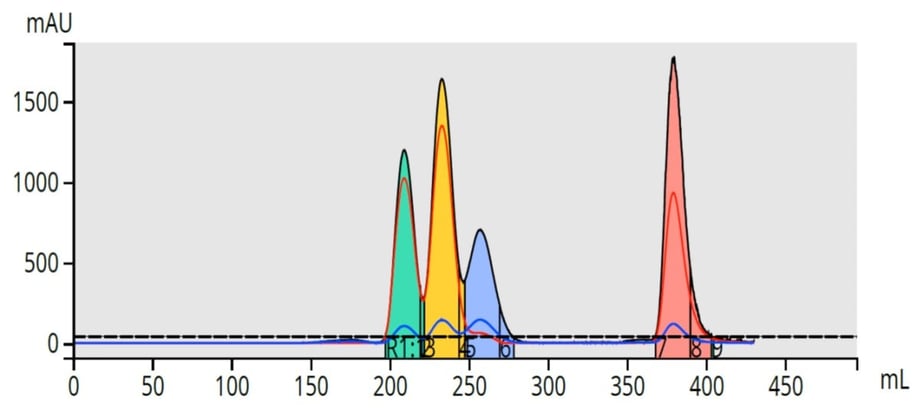
Figure 1. Crude sample purification, 35 mg, using a 25-gram 50 µm Biotage® KP-Sil column provides an incomplete separation of the first three compounds.
The 35 mg purification was repeated using the competitive, higher-priced, high performance 24-gram column (30 µm, 500 m2/g). As expected, this smaller particle size silica column generated a far better, full resolution separation, Figure 2.
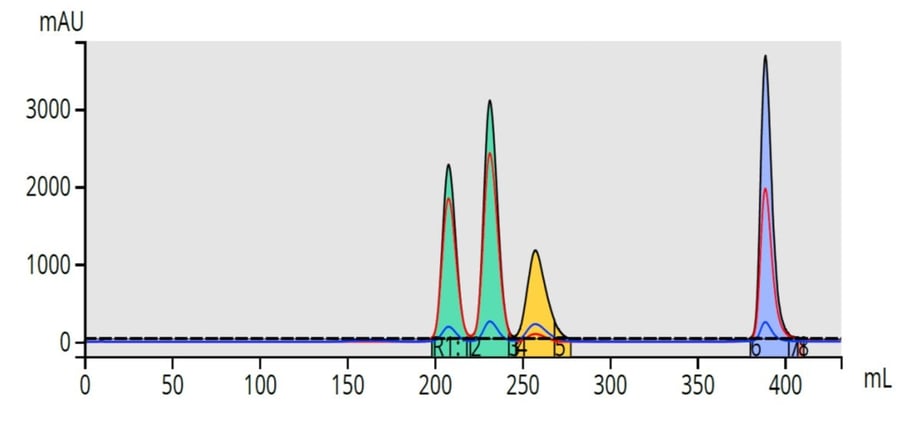
Figure 2. A 35 mg load purification using a competitive, 24 g high performance flash column provides a virtually complete separation of all compounds.
Smaller silica particles elute compounds in tighter bands, which increases the resolution between them. This column is priced almost 2x that of the SNAP KP-Sil column and, because of the purity and yield improvements, becomes a viable alternative to the lower-priced column.
Another, low-priced column, a Biotage® Sfär (60 µm, 750 m2/g) also fully separated each compound (same 35 mg load size), matching the competitive, high priced, high performance column, Figure 3.
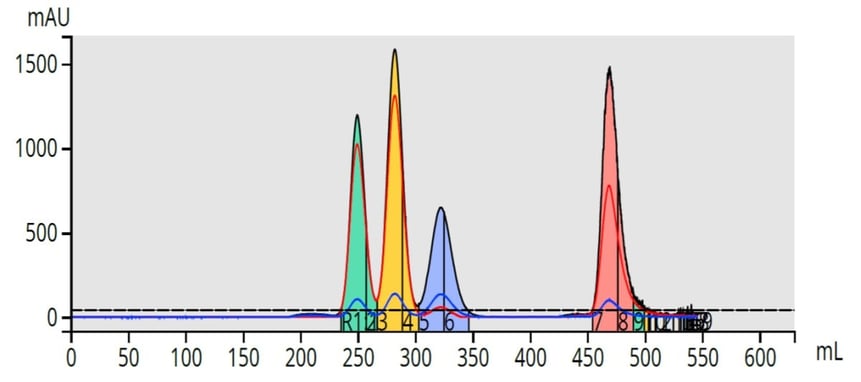
Figure 3. Purification of the same 35 mg sample using a high surface area, 25 g, 60 µm Biotage® Sfär column provides virtually complete resolution of all components.
This data shows the impact surface area has on flash purification effectiveness – more surface area = increased loading capacity. The Biotage Sfär 60 µm silica column provides to same separation and resolution but is about half the price of the competitive column.
Lastly, a high performance Biotage® Sfär HC column (20 µm, 750 m2/g) was evaluated with the same 35 mg load, Figure 4.
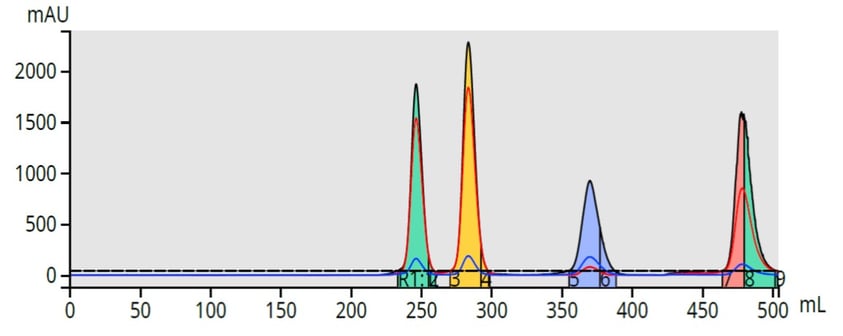
Figure 4. Sample purification using the high performance Biotage® Sfär HC 25 g column shows the best separation of any of the evaluated column.
This high performance column provides the best separation of any of the columns tested, so much so that I retested at twice the load (70 mg), Figure 5.
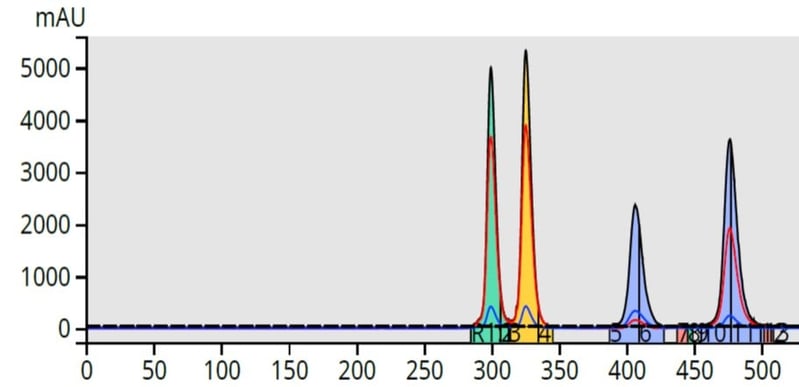
Figure 5. The Biotage® Sfär HC 25 g column at twice the loading (70 mg) provides a separation better than the other columns loaded with half the sample load.
At twice the load, this column still provided superior resolution compared to both the 60-µm Biotage Sfär column and the 30-µm high performance competitive column. The combination of high surface area and smaller particle diameter work in tandem to maximize crude reaction mix load while still providing optimal separation performance. The result is maximized target compound purity and yield, even at 2x the load of all other columns at a lower cost/mg of purified product, Table 2.
Table 2. Purification cost comparison
| SNAP KP-Sil | Sfär 60 | Sfär HC | Sfär HC | Competitor | |
| Load (mg) | 35 | 35 | 35 | 70 | 35 |
| % separation? | 60% | 100% | 100% | 100% | 100% |
| Usable product yield (mg)* | 5.25 | 8.75 | 8.75 | 17.5 | 8.75 |
| $/column, 25 g (list price) | $13.60 | $11.50 | $21.00 | $ 21.00 | $22.30 |
| $/mg product | $2.59 | $1.31 | $2.40 | $1.20 | $2.55 |
*Usable product yield = initial load*% separation/4 (4 compounds of equal quantity in the test sample)
So, should you use higher priced, "high-performance" columns for routine purification? Yes, especially if you want to increase your load per column, maximize compound purity and yield, or decrease column size (a great way to reduce solvent usage). Otherwise, a less expensive, high surface area column such as the Biotage Sfär 60 µm will accomplish your purification goals at a reasonable price.
For more information on flash chromatography, please listen to my webinar below!

 Organic Workflow
Organic Workflow Peptide Workflow
Peptide Workflow Scale-Up Flash Purification
Scale-Up Flash Purification  Sample Preparation
Sample Preparation Biomolecule Purification
Biomolecule Purification Oligo synthesis
Oligo synthesis Scavengers and Reagents
Scavengers and Reagents Service & Support
Service & Support Accessories & Spare parts
Accessories & Spare parts Investors
Investors Reports & News
Reports & News The Share
The Share Corporate Governance
Corporate Governance Calendar
Calendar Sustainability
Sustainability Our Offering
Our Offering Our History
Our History Our Locations
Our Locations Leadership
Leadership